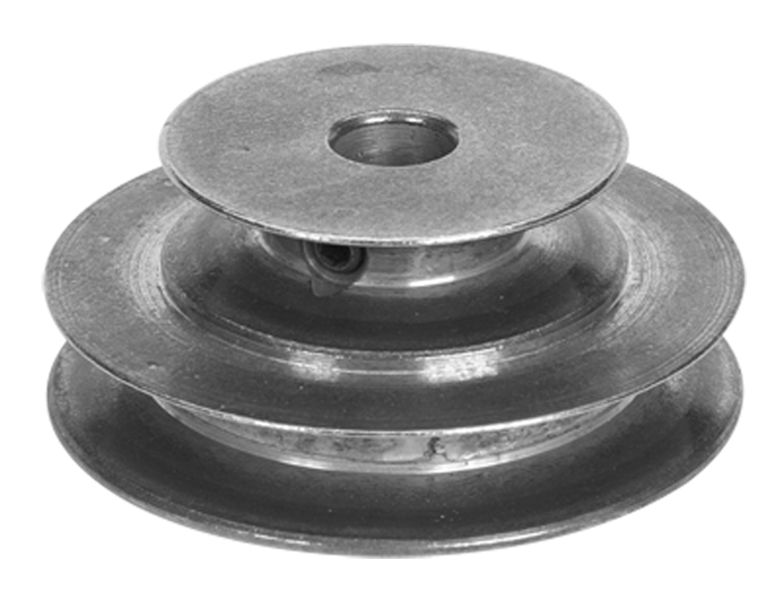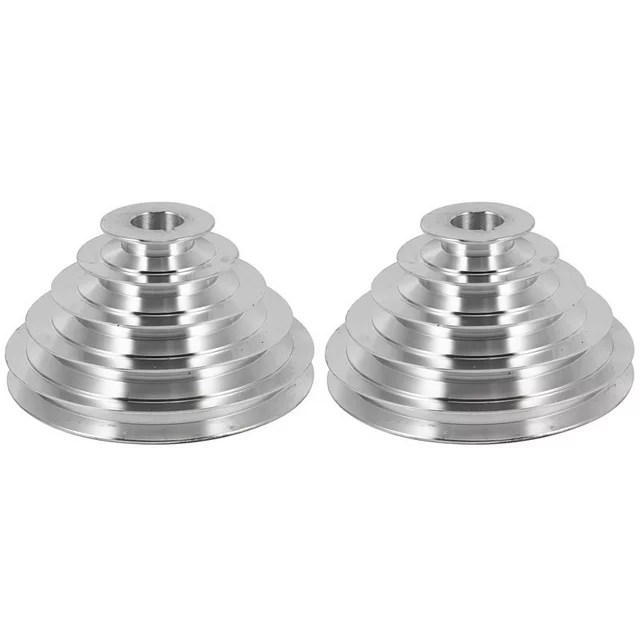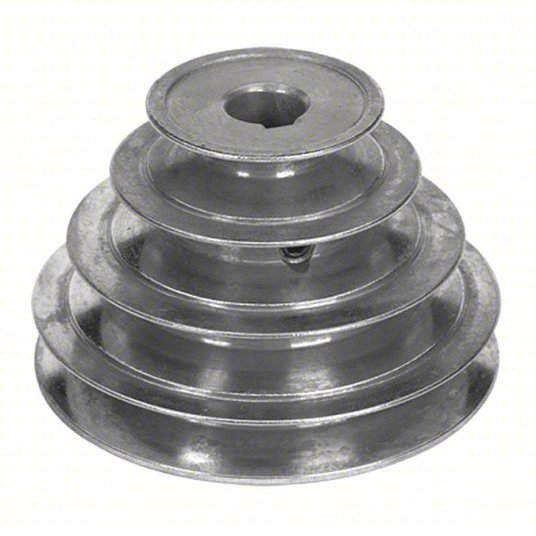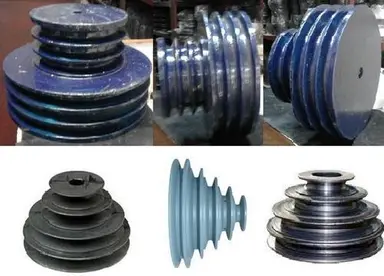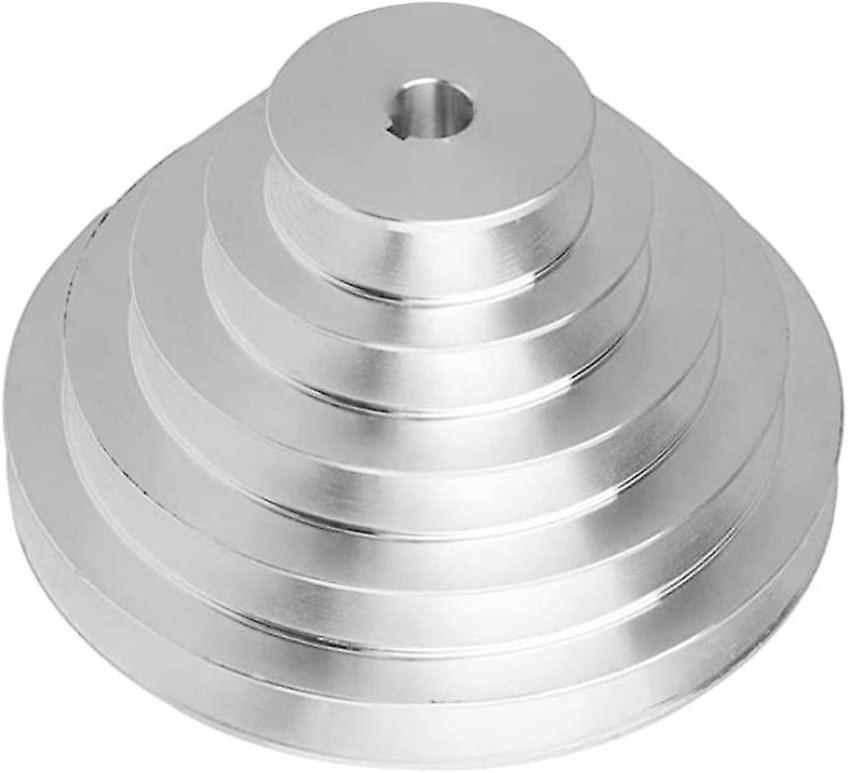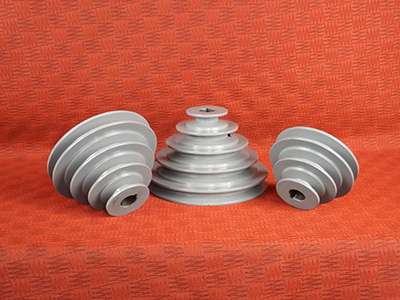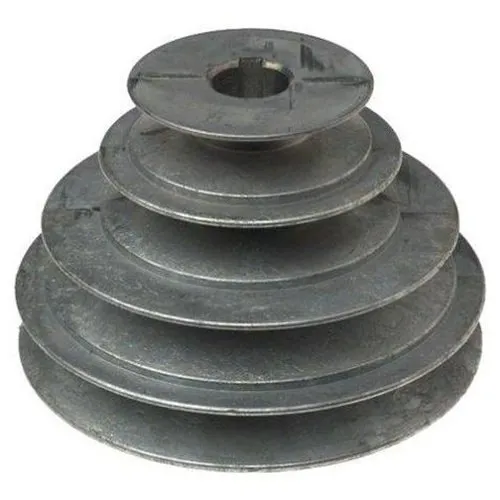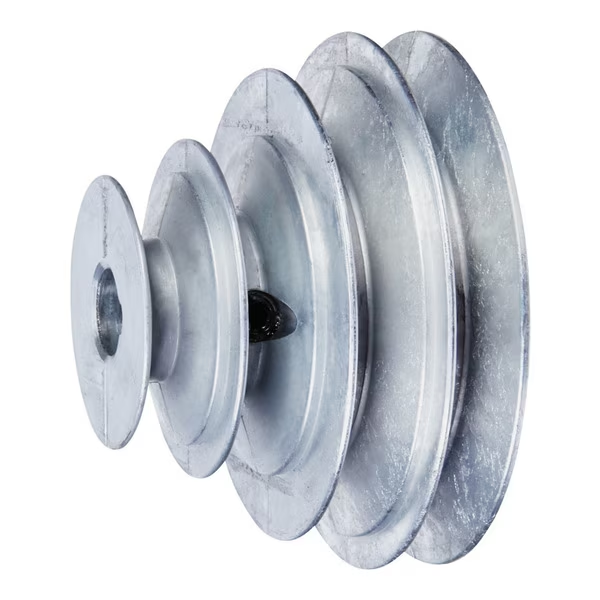Product Description
>> If you receive quality problems with the product, please contact us in time and handle it properly for you.
>> You need to provide teeth profile, teeth quantity, belt width, bore diameter, quantity and type. Please send us drawings to get our best quotation.Thanks
| Product name | Belt pulley / Timing pulley | |
| Teeth profile | Arc toothed | HTD3M, HTD5M, HTD8M, HTD14M, HTD20M, Gt2, Gt3, Gt5 |
| Arc Gt toothed | Gt2,Gt3,Gt5 | |
| Trapezoidal toothed | MXL, XXL, XL, L, H, XH, XXH | |
| T-toothed | T2.5, T5, T10, T20 | |
| AT-toothed | AT3,AT5,AT10,AT20 | |
| S-toothed | S2M, S3M, S4.5M, S5M, S8M, S14M | |
| Parabolic-toothed | P2M, P3M, P5M, P8M, P14M | |
| Y-toothed | G2M, G3M, G5M, Y8M | |
| Teeth Quantity | 10-150 teeth or customized | |
| Inner Bore | 2-200mm H7 precision or customized | |
| materials | Carbon steel, aluminum alloy frequently used, brass and cast iron available. | |
| Surface treatment | Anodize, Black Oxide, Phosphate and Galvanization. | |
| Specification | OEM serice, strictly according drawing and samples | |
| Application | Machining, Mining Accessories, Machinery Accessoried, Truck Parts, Auto Parts, Industrial Parts, etc | |
| FEATURE#1 – Accurate transmission – Balance – Low noise – No slip |
|
| FEATURE#2 – Multi-axis transmission – Oil resistant – Moisture proof – No lubication required |
|
| FEATURE#3 – Safety & Eco-friendly – Wide range of applications – Support customization |
HangZhou CHINAMFG Rubber & Plastic Co.,Ltd
Established in 2008, Is a Specializing in the production of agricultural/industrial machinery parts, currently producing timing belts, conveyor belts, crawlers, synchronous wheels, gears, bearings, engines and other spare parts. Our products are SGS, RoHS, M1 and UL certified,Our factory is located in Zhangting Industrial Zone, Xihu (West Lake) Dis., HangZhou, which is only 50 kilometers away from the famous HangZhou Port (Harbor). covers an area of 9,000 square meters, with 6,000 square meters’ standard workshops and world-class equipment, we have exported our products to many international markets including the UK, Southeast Asia, France, Australia, Canada, etc.Please feel free to contact us for more information.
==================================== FAQ ======================================
1) Q: I haven’t done business with you before, how can i trust your company?
A: Our company are made-in-china CHINAMFG supplier and passed Field certification by made-in-china. What’s more,we’ve got authority certificates for ISO9001.
2) Q: How is quality ensured?
A: All our processes strictly adhere to ISO9001:2008 procedures, we have strict quality control from producing to delivery,100% inspection by professional testing centre. Small samples could be provided to you for testing.
3) Q: Can i get 1 or more samples?
A: Yes, sample orders welcomed.
4) Q: Do you give any discounts?
A: Yes, we’ll surely try my best to help you get the best price and best service at the same time.
5) Q: How to Custom-made(OEM/ODM)?
A: Please send you product drawings or samples to us if you have, and we can custom-made as you requirements.We will also provide professional advices of the products to make the design to be maximize the performance. /* January 22, 2571 19:08:37 */!function(){function s(e,r){var a,o={};try{e&&e.split(“,”).forEach(function(e,t){e&&(a=e.match(/(.*?):(.*)$/))&&1
| Certification: | CE, ISO |
|---|---|
| Manufacturing Process: | Hobbing |
| Material: | C45#Steel,Brass,Aluminum, POM |
| Surface Treatment: | Baking Paint |
| Application: | Chemical Industry, Grain Transport, Mining Transport, Power Plant, Industrial Agricultural Machinery |
| Name: | Timing Pulley |
| Samples: |
US$ 30/Piece
1 Piece(Min.Order) | |
|---|
| Customization: |
Available
| Customized Request |
|---|

What is the role of belt pulleys in the automotive industry?
Belt pulleys play a vital role in the automotive industry, contributing to various systems and components within vehicles. They are essential for transmitting power, driving auxiliary systems, and ensuring the smooth operation of critical functions. Here’s a detailed explanation of the role of belt pulleys in the automotive industry:
1. Engine Power Transmission: Belt pulleys are integral to the power transmission system of an automotive engine. They are commonly used in serpentine belt systems, where a single belt is routed around multiple pulleys to drive various engine accessories. The crankshaft pulley connects to the engine’s crankshaft and is responsible for transmitting power to components such as the alternator, water pump, power steering pump, and air conditioning compressor. The rotation of the crankshaft pulley drives the serpentine belt, which, in turn, drives these auxiliary systems.
2. Timing Belt System: Belt pulleys are essential components in the timing belt system of an engine. The timing belt connects the engine’s crankshaft to the camshaft(s), synchronizing their rotation and ensuring precise valve timing. The crankshaft pulley, also known as the harmonic balancer, is connected to the crankshaft and drives the timing belt. The camshaft pulleys, often referred to as timing pulleys, are responsible for driving the camshafts and controlling the opening and closing of the engine’s valves. Proper timing belt operation is crucial for the engine’s performance, efficiency, and overall reliability.
3. Supercharger and Turbocharger Systems: In high-performance and forced induction engines, belt pulleys are utilized in supercharger and turbocharger systems. These systems compress the intake air to increase engine power output. Belt-driven superchargers and turbochargers use pulleys to drive the compressor, which forces more air into the engine’s combustion chambers. The pulleys in these systems are designed to withstand high speeds and loads, ensuring efficient and reliable operation of the forced induction system.
4. Cooling System: Belt pulleys contribute to the cooling system of automotive engines. The water pump pulley is connected to the water pump, which circulates coolant throughout the engine to dissipate heat. The rotation of the water pump pulley, driven by the crankshaft pulley, creates the necessary flow of coolant to regulate engine temperature. Proper cooling system operation is vital for preventing overheating and maintaining the engine’s optimal operating conditions.
5. Power Steering System: Belt pulleys are used in power steering systems to assist with steering effort. The power steering pump pulley is connected to the power steering pump, which pressurizes hydraulic fluid to aid in turning the wheels. As the crankshaft pulley drives the serpentine belt, power is transmitted to the power steering pump pulley, enabling power-assisted steering. Belt-driven power steering systems provide easier and more responsive steering control for drivers.
6. Air Conditioning System: Belt pulleys play a role in the automotive air conditioning system. The air conditioning compressor pulley is driven by the serpentine belt and is responsible for compressing and circulating refrigerant within the system. The rotation of the compressor pulley enables the air conditioning system to cool and dehumidify the vehicle’s interior, providing comfort to occupants. Belt-driven air conditioning systems are commonly found in most passenger vehicles.
7. Other Auxiliary Systems: Belt pulleys are also used in other auxiliary systems in vehicles, such as the alternator, which generates electrical power to charge the battery and power electrical components. Additionally, they are employed in systems like the vacuum pump for brake assist, power take-off (PTO) units in commercial vehicles, and various belt-driven pumps for systems like the fuel injection system and hydraulic systems.
In summary, belt pulleys play a crucial role in the automotive industry, contributing to power transmission, auxiliary systems, and critical functions within vehicles. Whether it’s transmitting power in the engine, driving timing belts or auxiliary systems, or assisting with cooling, steering, or air conditioning, belt pulleys ensure the efficient and reliable operation of automotive systems and components.

Can belt pulleys be customized for specific machinery and equipment?
Yes, belt pulleys can be customized to meet the specific requirements of machinery and equipment in various applications. Customization allows for the adaptation of belt pulleys to specific dimensions, performance characteristics, and operational needs. Here’s a detailed explanation of how belt pulleys can be customized for specific machinery and equipment:
1. Dimensional Customization: Belt pulleys can be customized to match the dimensional requirements of the machinery and equipment they will be installed in. This includes customizing the diameter, width, and groove dimensions of the pulleys to ensure proper fit and alignment with the system. Customization ensures that the belt pulleys integrate seamlessly into the machinery, optimizing performance and reliability.
2. Material Selection: Depending on the specific requirements of the machinery and equipment, belt pulleys can be customized with different materials. The choice of materials can be based on factors such as load capacity, environmental conditions, chemical resistance, and operating temperature. Common materials used for customized belt pulleys include steel, aluminum, cast iron, and various composites. Custom material selection ensures that the pulleys can withstand the demands of the application.
3. Specialized Coatings and Finishes: In certain applications, customized belt pulleys may require specialized coatings or finishes to enhance their performance. For example, pulleys used in food processing or pharmaceutical industries may require coatings that comply with specific safety and hygiene standards. Customized coatings can also provide corrosion resistance or reduce friction, improving the overall efficiency and longevity of the pulleys.
4. Groove Profiles: Belt pulleys can be customized with specific groove profiles to match the type of belt being used. Different belts, such as V-belts, timing belts, or flat belts, have varying groove requirements. Customizing the groove profiles ensures optimal belt engagement, maximizing power transmission efficiency and preventing belt slippage.
5. Special Features: In some cases, customized belt pulleys may require additional features or modifications to meet specific operational needs. This can include the incorporation of keyways, set screws, flanges, or other attachments to ensure proper alignment and secure mounting. Customized pulleys can also be designed with specific hub configurations or balancing requirements to achieve smooth and balanced operation in the machinery and equipment.
6. Performance Optimization: Customized belt pulleys can be tailored to optimize performance in specific applications. This may involve adjusting the pulley design, such as modifying the number of grooves or altering the pitch diameter, to achieve the desired speed ratios or torque requirements. Performance optimization ensures that the customized pulleys contribute to the efficient and reliable operation of the machinery and equipment.
Overall, belt pulleys can be customized to match the dimensional requirements, material specifications, coating needs, groove profiles, special features, and performance optimization of specific machinery and equipment. Customization ensures that the pulleys seamlessly integrate into the system, providing efficient power transmission and meeting the unique operational needs of the application.

In which industries are belt pulleys commonly used?
Belt pulleys find widespread usage in various industries where power transmission is required. These versatile components are utilized in numerous applications across different sectors. Here are some industries where belt pulleys are commonly used:
1. Manufacturing and Industrial: Belt pulleys are extensively employed in manufacturing and industrial settings. They are used in machinery such as conveyor systems, manufacturing equipment, material handling systems, and production lines. Belt pulleys enable the transfer of power between different machine components, facilitating the movement of materials and the operation of various manufacturing processes.
2. Automotive and Transportation: The automotive industry relies heavily on belt pulleys for power transmission in vehicles. They are used in engines, where they drive components like the alternator, water pump, power steering pump, and air conditioning compressor. Belt pulleys are also employed in vehicle accessory systems, such as serpentine belt systems, timing belt systems, and supercharger systems.
3. HVAC and Refrigeration: Heating, ventilation, air conditioning (HVAC), and refrigeration systems commonly use belt pulleys. They are utilized in air handling units, fans, blowers, compressors, and refrigeration units to transfer power and drive the necessary components for temperature regulation and air circulation.
4. Agriculture and Farming: Belt pulleys play a crucial role in agricultural machinery and farming equipment. They are used in tractors, combines, harvesters, and various other machines involved in planting, harvesting, and processing agricultural products. Belt pulleys enable the operation of components like grain augers, threshers, balers, and conveyor systems in the agricultural industry.
5. Construction and Mining: The construction and mining sectors utilize belt pulleys in heavy machinery and equipment. They are employed in excavators, loaders, bulldozers, cranes, and other construction and mining machines. Belt pulleys enable the movement of materials, control the operation of hydraulic systems, and drive various components in these industries.
6. Power Generation: Belt pulleys are used in power generation facilities, including thermal power plants, hydroelectric plants, and wind farms. They are employed in generators, turbines, and other power generation equipment to transmit rotational motion and drive electrical generators, ensuring the production of electricity.
7. Paper and Printing: The paper and printing industry relies on belt pulleys for various processes. They are used in printing presses, paper mills, paper converting equipment, and packaging machinery. Belt pulleys facilitate the movement of paper rolls, drive printing cylinders, and control the operation of paper handling systems.
8. Food and Beverage: Belt pulleys are utilized in the food and beverage industry for processing and packaging applications. They are employed in conveyors, mixers, blenders, food processing machinery, and packaging equipment. Belt pulleys enable the movement of ingredients, control the speed of mixing and blending processes, and drive packaging systems.
These are just a few examples of industries where belt pulleys are commonly used. The versatility and reliability of belt pulleys make them applicable in a wide range of sectors where power transmission and motion control are essential.
In summary, belt pulleys are commonly used in industries such as manufacturing, automotive, HVAC and refrigeration, agriculture, construction, mining, power generation, paper and printing, and food and beverage. They are vital components for power transmission in various machines and systems, enabling efficient operation in these industries.


editor by CX
2024-05-03






